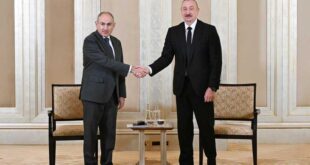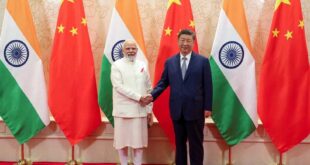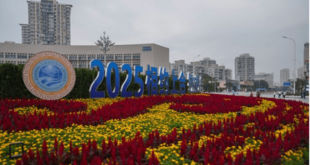We should accept that we cannot solve Syria’s problems, at least not right now, and so should not waste precious time and resources on local politics.
America has struggled since President Obama to get Syria policy right, largely because of being overwhelmed by a long list of critical issues—from the humanitarian toll of the civil war, pushing out Assad and facilitating a political transition to the actions of our global and regional adversaries there. It was a classic case of the adage “when everything is a priority, nothing is a priority.”
During the first Trump administration, U.S. Syria policy got it as right as possible by focusing on near and urgent issues facing us and our partners: destroying the ISIS caliphate and diminishing Iran’s footprint there.
It didn’t “solve” Syria’s problems, but it put the United States in the best possible posture to protect our priorities.
Today, Syria presents us with a new set of complex dynamics. With former dictator Bashar al-Assad abruptly ousted from power in December, Damascus is in the hands of Ahmad al-Sharaa (the leader of al-Qaeda-linked Nusra Front known formerly by his jihadist nom de guerre, Abu Muhammad al-Jawlani), who has swapped his traditional thawb for a suit and has been meeting with world leaders talking of respect for women and minorities.
Aside from a bloody clash between forces loyal to him and those loyal to Assad in early March that left more than 1,000 (mostly civilians) dead, Sharaa has tried to cut a more “moderate” figure. Israel’s foreign minister was unmoved, describing the event as a true reflection of Sharaa’s jihadist intentions.
Further complicating the U.S. position is that its local partner force, the Syrian Democratic Forces, entered into an agreement with Sharaa’s Hayat Tahrir al-Sham.
The Trump administration has wisely not yet put out a policy regarding Syria, which is particularly commendable considering the many international delegations (including, before January 20, the Biden team) seeking out a meeting with the new interim government.
As the administration considers its options, there appears to be a consensus forming in Washington and in the international community: The enemy we know is better than the one we don’t. Therefore, it is in the U.S. interest to build ties with Sharaa, as our European allies have done, lest he do the bidding of our adversaries.
This is plainly wrong. Three months of niceties from a global terrorist is hardly an assurance that he will align with us over our adversaries.
Any engagement—without clear conditions—with Sharaa puts us into our old, failed pattern of backing the wrong horse and realizing too late that we are working at cross-purposes with our own security.
The new Syria—with a diminished Iranian footprint, and an interim government still trying to find its footing—presents us with another way.
We must begin by looking, for now, beyond Damascus and instead work with Israel, Jordan, and other regional partners to ensure the ungoverned areas to the south and east of the country do not become havens for terrorists or for Iran.
Israel has already built out its military infrastructure in the southwest of the country as it has reinforced ties with friendly minority groups like the Druze, and Jordan—increasingly in Iran’s crosshairs—has interdicted Iran-linkeddrug trafficking on its border with Syria, including with air strikes.
The United States should reinforce Israel’s actions in this buffer area in the south of the country.
And in the east of the country, where we have roughly 2000 troopsstationed, we must focus on shifting our mandate to not only countering ISIS but, alongside Israel, also on countering any Iranian military buildup, as I have argued elsewhere.
At the same time, we must continue to diminish Hezbollah’s political power and resources in neighboring Lebanon. Without Hezbollah, Iran has few options for reconstituting its presence in Syria.
We should accept that we will not solve Syria, at least not right now, and so should not waste precious time and resources on local politics. As President Trump correctly said after Assad’s ouster, “this is not our fight.”
By prioritizing issues that will threaten us and our partners if not addressed—namely the risk of a new jihadist state or a reconstituted Iranian regime satellite—we not only have the best opportunity to build a broad and effective regional coalition facing shared issues, but also can set the conditions on the ground that could help set a political transition in motion that leaves a better Syria for its people, and for ours.
 Geostrategic Media Political Commentary, Analysis, Security, Defense
Geostrategic Media Political Commentary, Analysis, Security, Defense





